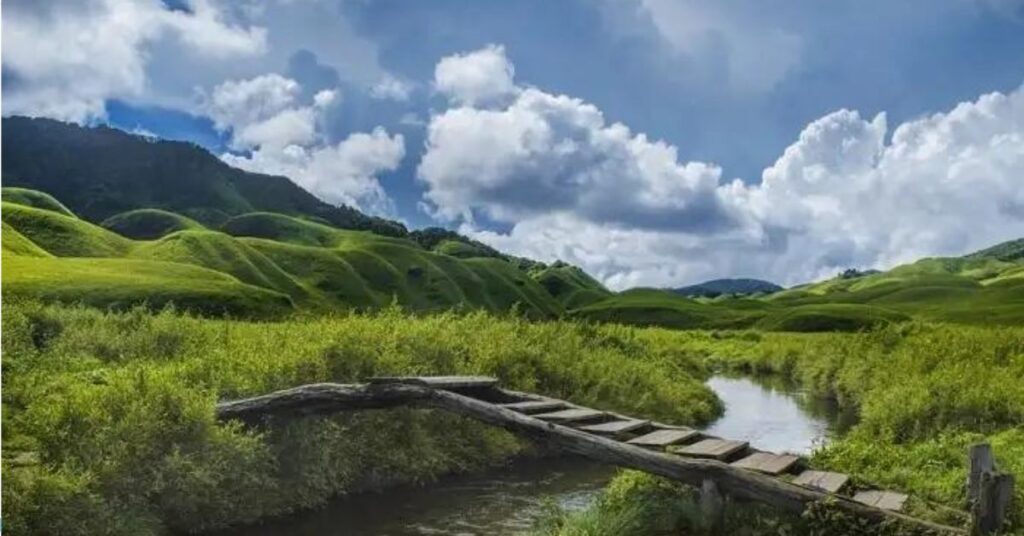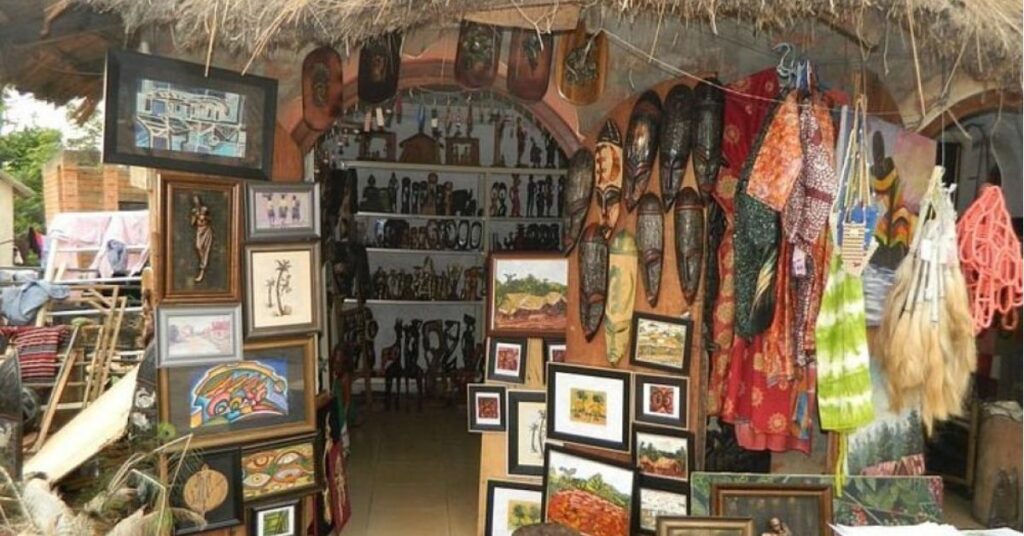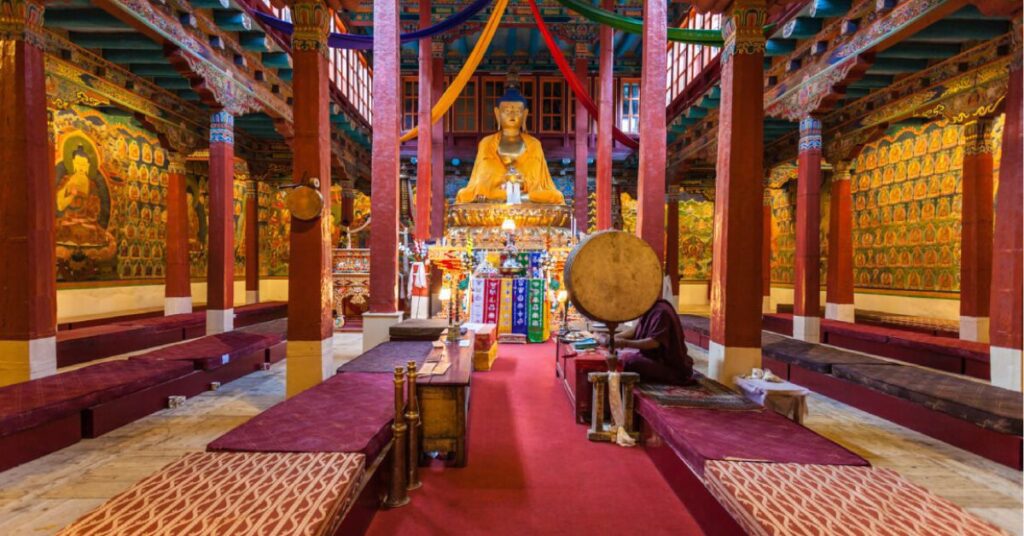Chumukedima is a hidden gem nestled in Nagaland’s beautiful hills. Unlike its busier neighbors, this quiet town offers a peaceful escape into nature and culture. With its green hills, traditional Naga houses, and friendly people, Chumukedima is a perfect place to relax and experience the real Nagaland. It’s a place where you can enjoy nature walks, learn about local customs, and feel a world away from the city.
how to reach:
By Air:
The closest airport is Dimapur, about 16 kilometers away. You can fly there from major Indian cities. From the airport, take a taxi or car to Chumukedima. The journey takes around 30-45 minutes.
By Train:
Dimapur railway station is well-connected. Trains arrive from Guwahati, Kolkata, and other places. From the station, take a taxi or bus to Chumukedima. The journey takes about 30-45 minutes.
By Road:
Chumukedima is connected by road to many places. You can drive from Dimapur in about 30-45 minutes. There are also buses and taxis from Kohima, which takes around 1.5-2 hours.
BEst time to visit:
- Autumn (October-November): This is a great time to visit. The weather is cool and pleasant, perfect for exploring the area. The scenery is beautiful, with lush greenery everywhere.
- Winter (December-February): Enjoy crisp, cool weather and fewer crowds. This is peak season due to pleasant temperatures and nearby festivals like Hornbill.
- Spring (March-May): Spring brings warmer weather and blooming flowers. The landscape is vibrant and green.
- Monsoon (June-September): Heavy rain makes travel difficult. While the scenery is lush, be prepared for wet weather and potential disruptions.
Attractions:
Chumukedima Village:

Chumukedima Village is a charming place that shows you how Naga people really live. The village has special houses made of bamboo, wood, and grass that are really cool to look at. You can walk around and see how the Naga people live and learn about their traditions. The people here are very friendly and love to talk about their culture. You can also find beautiful handmade things to buy as souvenirs.
Diezephe Craft Village:

Diezephe Craft Village is a special place near Chumukedima where talented people make beautiful things. They’re really good at weaving colorful cloth with fancy patterns and making amazing things from bamboo and wood. It’s fun to watch them work and learn about their skills. You can also buy their handmade stuff to take home as a special souvenir.
Hemis Monastery:

While Hemis Monastery is a significant Buddhist site, it’s actually located in Ladakh, not Nagaland. There seems to be a misunderstanding. If you’re exploring the broader northeastern region of India, you might consider visiting other important religious sites like Tawang Monastery in Arunachal Pradesh or Majuli Island in Assam, both known for their strong Buddhist influence. These destinations offer unique cultural experiences and opportunities for spiritual exploration.
Locaal Experiences:
Savor local flavors: Enjoy traditional dishes like smoked pork and spicy chutneys.
Learn traditional crafts: Try your hand at weaving, carving, or pottery.
Experience Naga life: Join festivals, explore villages, and meet friendly locals.
Explore nature: Hike through the hills, spot wildlife, and breathe in fresh air.
Shop for treasures: Find unique handmade souvenirs at local markets.
Indulge your senses: Enjoy vibrant music, dance, and the taste of local tea or coffee.
Capture memories: Take stunning photos of landscapes, people, and culture.
Travel tips:
Get the Right Papers: Make sure you have the correct permits and ID, especially if you’re coming from outside the Northeast.
Plan Your Transport: Arrange taxis or rental cars in advance, as public transport might not be easy to find.
Pack Smart: Bring clothes for different weather, including a jacket for cooler evenings and a raincoat.
Take Care of Yourself: Pack medicine and a first aid kit. Drink bottled water to stay healthy.
Bring Cash: Many places don’t accept cards, so carry enough cash.
Respect Local Ways: Be polite and follow local customs. Ask before taking photos.
Stay Safe: Follow advice from local people, especially when exploring or doing outdoor activities.
Book Your Stay: Reserve a place to stay, especially during busy times or festivals.
Learn Basic Phrases: Knowing a few local words shows respect for the culture.
Get Travel Insurance: Protect yourself from unexpected problems with travel insurance.
Know Important Numbers: Learn emergency numbers and where to find medical help.
Protect the Environment: Don’t litter and follow rules to protect nature and culture.
Conclusion
Chumukedima, a serene escape nestled in Nagaland, offers a captivating blend of nature and culture. Discover charming villages, vibrant markets, and warm hospitality while exploring this hidden gem. Immerse yourself in the region’s rich heritage, from traditional crafts to captivating landscapes. For an unforgettable journey, let Xplro.com guide you through this enchanting destination.
FAQs
1. What makes Chumukedima special?
- Chumukedima is celebrated for its authentic Naga village experience, characterized by traditional Naga architecture, lush landscapes, and vibrant local culture. It provides visitors with a unique chance to witness and engage with the traditional way of life of the Naga people.
2. How can I travel to Chumukedima?
- To reach Chumukedima, travel to Dimapur first, which is the closest major city. Dimapur is accessible by air and rail. From there, you can take a taxi or local transport to Chumukedima, which is approximately 16 kilometers away.
3. When is the ideal time to visit Chumukedima?
- The most favorable times to visit Chumukedima are during autumn (October to November) and winter (December to February) when the weather is cool and pleasant. Spring (March to May) is also a good choice due to its mild temperatures and floral beauty.
4. Are there any local festivals or events in Chumukedima?
- While Chumukedima might not host major festivals, the nearby city of Kohima offers notable events like the Hornbill Festival in December, which features traditional Naga dance, music, and cultural exhibitions.
5. What local dishes should I try in Chumukedima?
- In Chumukedima, you can enjoy traditional Naga dishes such as smoked pork with bamboo shoots, naga chili chutney, and rice beer. These authentic flavors are often available at local eateries or traditional homes.
6. What are my accommodation options in Chumukedima?
- Chumukedima provides a variety of lodging options, including guesthouses, lodges, and homestays. It’s advisable to make reservations in advance, particularly during busy travel periods.
7. What attractions are worth visiting near Chumukedima?
- Nearby attractions include the Naga Heritage Village, Diezephe Craft Village, Dzükou Valley, and the Kohima War Cemetery. Each offers unique insights into Naga culture, arts, and natural beauty.
8. Is Chumukedima suitable for outdoor enthusiasts?
- Absolutely. Chumukedima and its surroundings are perfect for outdoor activities such as nature walks, trekking in Dzükou Valley, and enjoying scenic viewpoints.
9. What should I bring when visiting Chumukedima?
- Prepare for varying temperatures by packing layers, especially if you visit during cooler months. If traveling in the monsoon season, bring waterproof clothing. Also, include any necessary medications and a basic first aid kit.
10. What health precautions should I consider?
- It’s wise to carry essential medications and a first aid kit as medical facilities might be limited. Stick to bottled or purified water to avoid health issues, and check for any specific health advisories related to the region.
11. Can I use credit cards in Chumukedima?
- Many local vendors in Chumukedima may not accept credit cards, so it’s a good idea to carry cash for your transactions.
12. How can I engage respectfully with the local community?
- Show respect for local traditions by asking for permission before taking photos, participating in cultural practices, and learning a few basic phrases in the local language to enhance communication and interaction.






